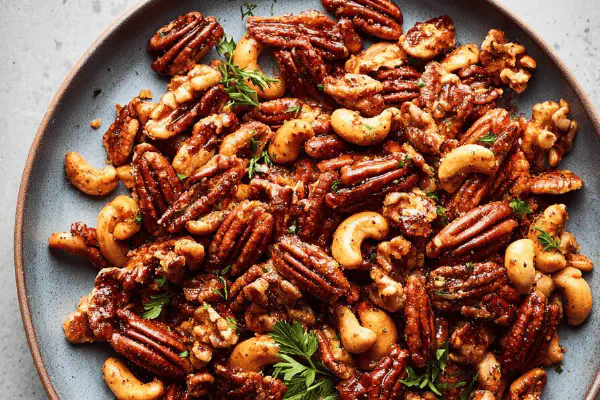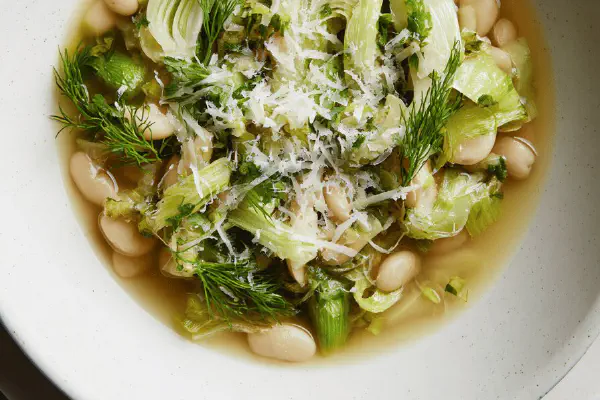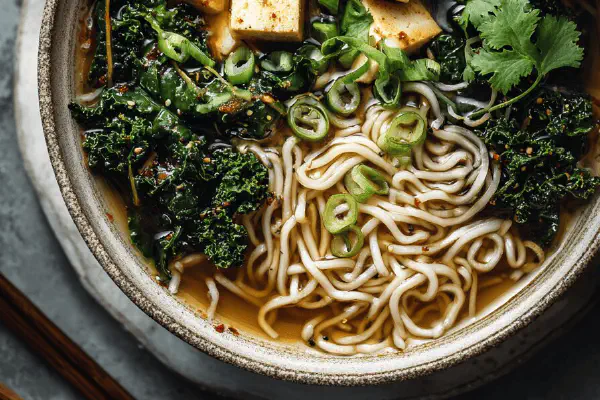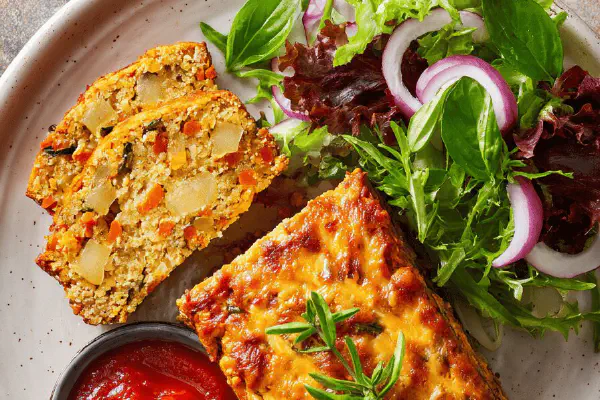Featured Recipe
Citrus Wild Grain Mix

By Kate
"
Nutty wild grain blended with tangy citrus, crunchy nuts, and vibrant dried fruit. Olive oil ties the flavors while celery adds fresh snap. Crumbled crumbly cheese folded in at the end balances textures and flavors. Chill or serve room temp. Substitutions suggested for nuts, cheese, and citrus. Focus on tactile cues for fluffiness and doneness rather than strict clocks. Learn ways to rescue overcooked grains or dry dressings. Quick toss salad that highlights sturdy grains with bits of sweet, salty, crunch. Variation ideas for seasonal ingredient swaps included.
"
Prep:
12 min
Cook:
18 min
Total:
30 min
Serves:
6 servings
salads
grains
vegetarian
healthy
American fusion
Introduction
Grain salads need backbone. Wild rice or black rice rise to the occasion with chewy texture and earthy notes. Dried fruit cuts through starch, adds pop of color and unexpected sweet-tart zip. Nuts bring crunch that contrasts celery’s crispness. Cheese? Not just creaminess but salt punch that activates every bite. Olive oil and citrus dressing is key. Combine fat to soak flavors, acid to brighten. Chill or room temp works—different seasonal vibes. Overcooked wild rice ruins the party; learn signs before disaster. Rescue tactics included, so no wastage. Efficient prep: grain batch cooked ahead, core salad components assembled quickly. Variations for whatever’s on hand. This salad marches well beyond standard wild rice bowls.
Ingredients
About the ingredients
Start with good quality wild rice or substitute with black rice for subtle flavor tweak but similar chew. Rinsing rinses starch away, avoids gummy clumps. Use kosher salt for coarse grains that dissolve slowly; table salt can over-season quickly. Fresh lime or grapefruit juice provides bright acidity; avoid bottled juices that are harsh or overly sweet. Dried cherries or golden raisins introduce tartness and sweet chew, but dried apricots or cranberries work too. Nuts toasted bring aroma and crunch, raw nuts feel flat. Cashews swap in place of pistachios easily on budget or allergy concerns. For cheese, goat cheese gives tang and crumbly texture, softer than feta but less salty; adjust salt accordingly. Celery diced finely for clean crunch. Olive oil not just binder but flavor carrier; good quality extra virgin only.
Method
Technique Tips
Rinse grains under cold water until mostly clear. This prevents gummy texture later. Simmer grains gently beneath a lid on low to maintain shape and chew. High heat crushes grains into mush. Drain immediately to avoid waterlogged salad. Spread grains on sheet pan to cool fast; warm grains plus dressing equals clumping mess. Dressing mixture must be whisked well to emulsify oil, acid, and salt. Toss gently by folding with large spoon or spatula, not rough stirring that breaks grains. Add dried fruit and celery at once to distribute evenly. Toast nuts separately to develop nutty scent; room temp before tossing in. Cheese should only be added last to keep crumbly texture and prevent melting. Serve chilled or room temp; bring chilled salad to cellar temp to unlock flavors and soften grain bite. Adjust salt/acidity after mixing. Leftovers—redo the toss with extra oil or citrus if dry. Watch grain texture for signs of overcooked mush to salvage salad performance.
Chef's Notes
- 💡 Rinse wild rice under cold water until clear. Avoid gummy texture later; this is essential. A long soak isn't a must but can help. Fluff after cooking, listen for grains separating, not mushy; texture is key.
- 💡 Keep simmer on low; gentle bubbles, lid on. If grains burst, heat's too high. Sign: grains swell without breaking apart. Check for firm bite, visual cue matters. Cook time varies, don't rely strictly on clocks.
- 💡 Use fresh citrus juice for bright flavor, avoid bottled stuff. Lime or grapefruit gives nice zing, adjust for too much tartness. Balance with sugar or honey if needed. Citrus acidity is crucial; cuts through starch.
- 💡 Mix well, emulsify dressing oil, acid, and salt. Toss grains gently. Use large spoon or spatula. No rough stirring; keep grains intact. Integrate dried fruit and celery right after; even distribution boosts taste.
- 💡 If overcooked, grains might stick. Rescue by fluffing gently. Add bit more oil or dressing. Acid can help regain brightness too. Don't waste, adjust on the fly. Leftovers keep a couple days; toss them fresh again.
Kitchen Wisdom
How to know when wild rice is cooked right?
Look for swollen grains. Firm texture but not raw. Shouldn’t be mushy or sticky. Listen for quiet simmering. Just right takes focus.
What if I don't have nuts?
Omit if allergic. Try seeds instead; pumpkin or sunflower work well too. Just know crunch is different. Can add toasted elements for flavor boost.
Common issue: dressing too oily?
Adjust with citrus to cut richness. Start slow on oil, monitor grain absorption. Too much oil means you can’t balance well. Less is more, add gradually.
How to store leftovers?
Refrigerate tightly covered. They hold for a couple days. Grains might absorb dressing over time. Toss with extra oil before serving again. Adjust seasoning as needed.



